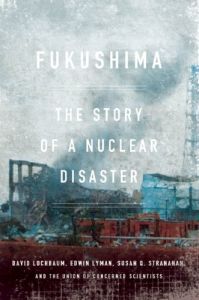Join getAbstract to access the summary!

Join getAbstract to access the summary!
David Lochbaum, Edwin Lyman, Susan Q. Stranahan and the Union of Concerned Scientists
Fukushima
The Story of a Nuclear Disaster
The New Press, 2014
What's inside?
Fukushima was one of history’s worst nuclear disasters. Be aware that a similar calamity could happen again.
Recommendation
Nuclear energy experts David Lochbaum, Edwin Lyman, Susan Q. Stranahan and the Union of Concerned Scientists offer an important chronicle of the unanticipated events that led to the calamity at Fukushima, one of history’s worst nuclear disasters. In this detailed account, an unlikely series of natural and manufactured events unfold, threatening to contaminate Tokyo with radiation. The authors’ account debunks the idea that nuclear power is safe. Their compelling granular descriptions may slow the story and blunt some main points, such as the US’s nuclear safety shortcomings. While always politically neutral, getAbstract recommends this vivid account to environmentalists, and the opponents and proponents of nuclear power and alternative energy.
Summary
About the Authors
David Lochbaum wrote Nuclear Waste Disposal and heads the nonprofit Union of Concerned Scientists’ Nuclear Safety Project. Edwin Lyman is a senior scientist in the organization’s Global Security Program. Susan Q. Stranahan is the author of Susquehanna: River of Dreams.




















Comment on this summary